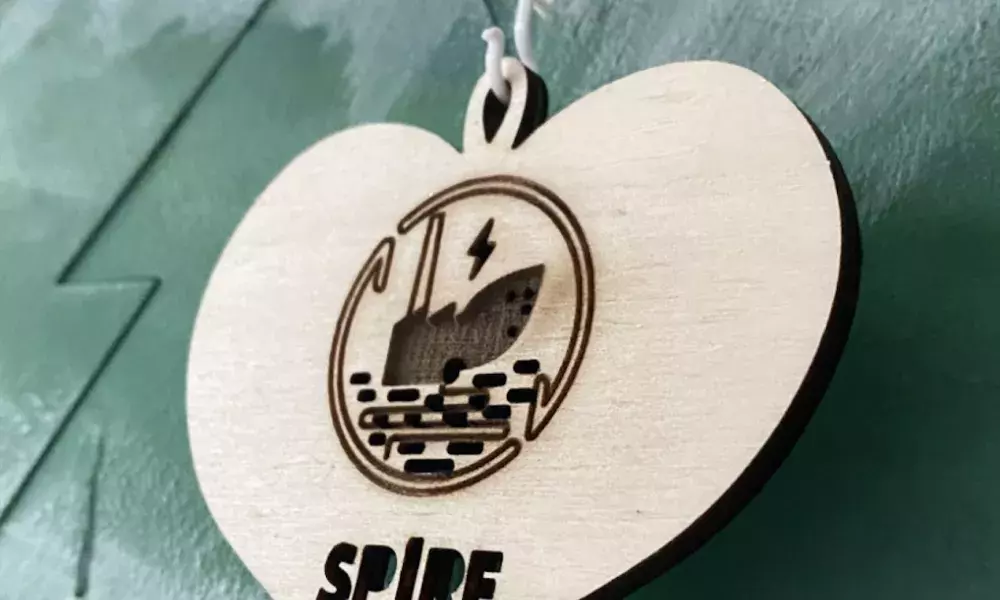
It also applies mitigation and adaptation risk measures that enable the project to be a reference for urban resilience in Europe.
Executive summary
This is the third journal of the Smart Post-Industrial Regenerative Ecosystem (SPIRE) project since its creation on 1st September 2019. The reclaiming and enhancing of Baia Mare's green infrastructure, linked to health and wellbeing, is now focused on the bio-based possibilities for business and products derived from the harvesting materials the sites will produce, with the final aim to boost the city's economy.
During the third year of the project's implementation, the city has continued its transition from its past as Romania's mining capital towards a new sustainable development model. Romplumb, Ferneziu, Colonia Topitorilor, Urbis, and Craica are the five pilot sites being reclaimed in the city that will be integrated into the future network of healthy natural and semi-natural areas within the BM 2050 Master Plan sustainable use of land strategy. An iGIS smart platform has been created to gather data and information and to show and monitor the results from the phytoremediation technics in the pilot sites.
The municipality keeps working towards raising awareness and commitment among the population to the dangers of pollution and the need to decontaminate the sites. To support and enhance this participatory approach, the City of Baia Mare has become a facilitator of the iLEU reward system (a digital token) to sponsor environmental-friendly actions and initiatives, both public and private. Additionally, a Start-Ups Mentoring Programme is ongoing, now complemented by lateral activities led by the Technical University of Cluj-Napoca - North University Centre of Baia Mare-Faculty of Science in collaboration with the Association of Maramures Entrepreneurs.
The SPIRE project collects lessons learnt to support future interventions in sites contaminated by Heavy Metals that want to apply phytoremediation technics to the soil. These experiences already provide insights that allow the project to enable new and alternative urban governance models for the future. It also will significantly help cities that need more comprehensive policies related to resilience and innovation.
Partnership:
- City of Baia Mare
- Urbasofia SRL
- Indeco Soft
- Transilvania Branch of the Romanian Association for Electronic Industry and Software (ARIES Transilvania)
- Baia Mare Metropolitan Area
- University of Agricultural Sciences and Veterinary Medicine of Cluj-Napoca (USAMV)
- Green Energy Association (GEA)
This journal presents a detailed analysis of the UIA challenges in the SPIRE project, measuring their risk from low to high. The participative approach and cross-department working present a low risk in implementation. Medium risk is identified for leadership, monitoring and evaluation, and communication. Finally, high risk is present for public procurement challenges and upscaling.
1. Project implementation process
The core activities developed by the SPIRE project, even though delayed, first due to the pandemic and second to the Ukraine war, are namely: iterative cultivation in the pilot sites; urban interventions after co-creation participatory workshops; IGIS platform in place, as well as the SPIRE Hub and Makerspace; the iLEU platform and wallet already working - even with a reduced number of participants yet-; and the Start-Ups Mentoring Programme now complemented by an initiative involving the Technical University of Cluj-Napoca - North University Centre of Baia Mare-Faculty of Science in collaboration with the Association of Maramures Entrepreneurs.
Within the SPIRE project, Nature-Based Solutions phytoremediation techniques use plants to clean up contaminated land and remove Heavy Metals from the soil. Since spring 2020, specific preparation processes for abandoned, degraded areas have been performed on the grounds of the five pilot sites. Plowing and tillage actions have been implemented to level the soil's surface and prepare suitable germination beds for the plantation species.
Energy willows and other selected species have been planted, following the criteria of the remediation Toolkit guided by the Conceptual Adaptive Site Management Application (CASMA). They provide a specialist catalogue based on soil HMC, remediation capacity per planting cycle, biomass harvest cycle, the cost-effectiveness of soil preparation and plantation, primary and secondary potential applications, cascading uses, and a set of design options. Preexisting plant species on the sites have been included because of their optimal adaption to the local conditions.
Energetic willows and other vegetal species growing evolution in sites have already been tested.
In some sites, the species planted have not survived. After a careful analysis, the SPIRE team now knows the following:
1. What are the optimum species seeds.
2. Where to get them.
3. When definitely to plant them.
4. How to do it properly to get the maximum impact for soil decontamination.

Figure 2. Field visit to the pilot sites to assess plantations (November 2022). Source: UIA Expert
Plantathlons activities are ongoing in the city, with a second round of plantations in November 2022. These activities are essential to enable the possibility of harvesting materials that will allow the proposed bio-based solutions to be tested.
After the consultation and collaborative workshops, some urban solutions and interventions were co-designed and co-created:





The SPIRE project has implemented an iGIS smart mapping and monitoring system for the five pilot sites that will provide healed land for the future of Baia Mare. The iGIS system locates the five pilot sites, providing information about soil analysis. It includes on-site ground measurements of pollutants, satellite imagery, and predictive algorithms for site improvements due to phytoremediation activities.
It defines accurate and effective indicators for Nature-Based Solutions (e.g., for PSRI, NDVI, NDSI, etc.). Some of these data are extrapolated from national statistics or existing surveys.
GIS enables the combination of spatial data and metadata with attributes, proposing an effective and practical way of assessing different situations.
Predictive analysis of sites and the city area has already been put in place for two satellite indices (NDVI and PSRI), the rest being in progress. As more data will be ingested regarding ground measurements (after several plantations), predictive algorithms will also be fine-tuned for that data.

Figure 8: Soil measurement. Source: SPIRE project
The interface displays a customizable view tailored to collect, revise, and show information about phytoremediation and plantation processes in the city. Information regarding plantathlons and landscaping is being added continuously to the platform to provide a comprehensive image of the SPIRE efforts and benefits to the community.
It will also embed information on the future Baia Mare Metropolitan Plan 2050. With solid consideration for general Data Protection Regulation (GDPR) compliance, data regarding iLEU user mobility trails are visible within iGIS, supporting identifying and creating bike and pedestrian lanes within the city. The information services provided are free and have open access for its users. SPIRE iGIS is available at: https://spire.city/index.php/igis/
On 28th October, the launch of the SPIRE HUB took place. The building has already been almost entirely renovated, and it is being used as SPIRE Hub and Makerspace.

Figure 9: SPIRE Hub (Christmas 2022). Source: SPIRE project.
Various activities are usually performed in the building, including meetings related to the SPIRE project, maker space usage with 3D printers and laser cutting machines already in place, and workshops on the iLEU platform and wallet. The Makerspace has built a Partnership with Transylvania College- creating a space for wood processing. The Association of Maramures Entrepreneurs is now using the base floor of the building, and on the first floor, an office has been provided for MUA and Baia Mare municipality linkages and prospects related to the project.
The delivery of the iLEU ecosystem (iLEU adoption) is slower than expected, and the iLEU ecosystem is limited due to the actual constraints the iLEU faces to be used and spent. An iOS version of the iLEU app has been launched as part of the planned mitigation actions to increase the iLEU spread.
The first two iLEU orders have already been completed in the SPIRE HUB, and a third is on its way. Further testing and fine-tuning in the iLEU and iGIS apps will come from community feedback and the identification of patterns for companies to spend iLEU to increase its attractivity for them.
Several meetings were conducted in 2022, and 3 potential acceptors will propose a list of products and services in early 2023. Timebank possibilities are being explored.

Figure 10: iLEU platform. Source: SPIRE project.
SPIRE will take advantage of the resulting biomass derived from nature-based solutions to stimulate local value chains within a circular performance scheme by launching and incubating new bio-based businesses focused on bioenergy and/or eco-materials and eco-products.
The mentoring programme process encompasses a series of steps:
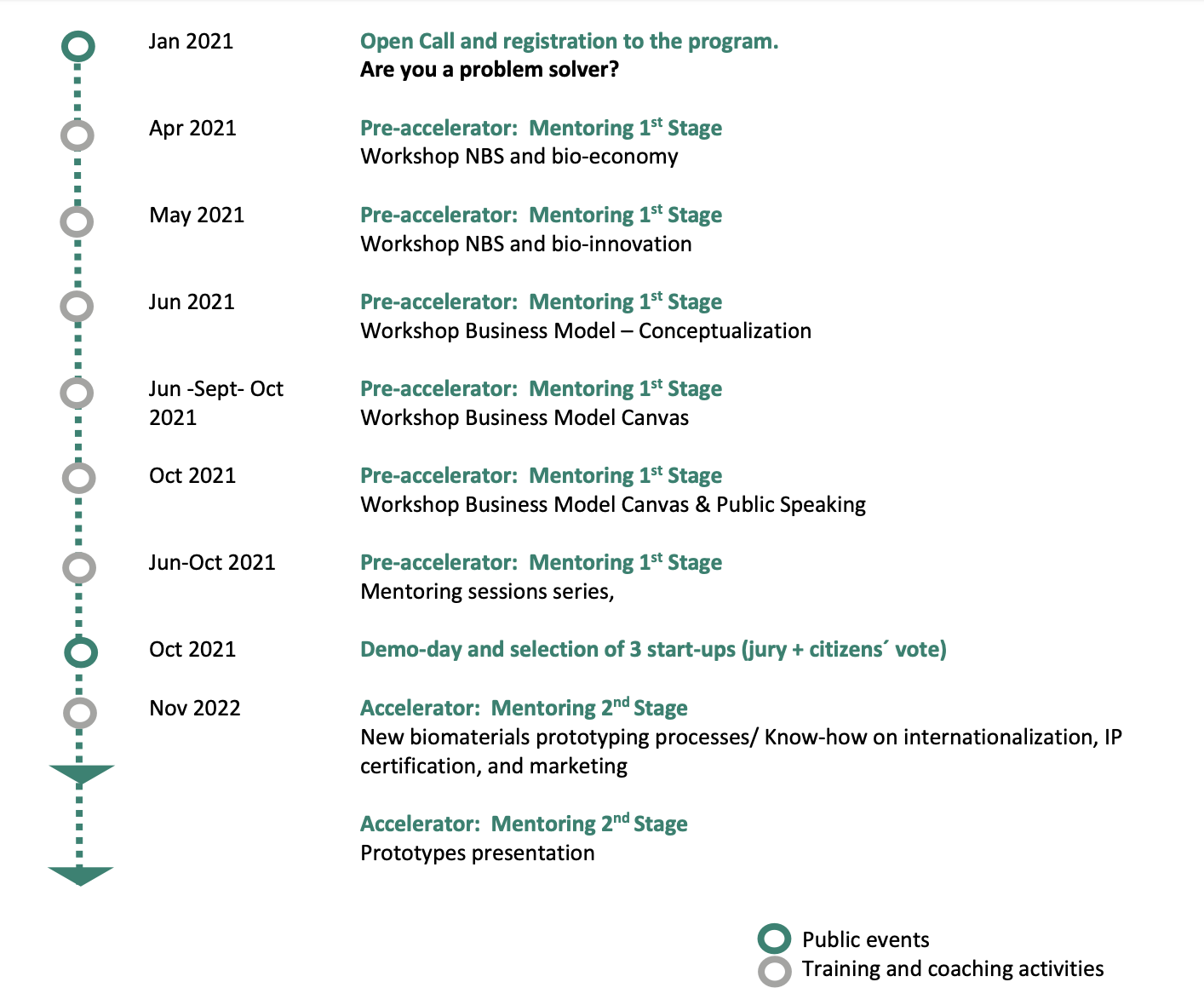
Figure 11: SPIRE STARTUPS Timeline. Source: SPIRE expert.
In the following project stages, personalized SPIRE STARTUPS mentoring sessions will be provided, with particular attention to all the necessary resources and activities to support the prototype development for new biomaterials.

Figure 12: Design Sprint dimensions. Source: https://design-sprint.com/google-ventures-design-sprint/
In complementarity with the SPIRE STARTUPS mentoring programme, several courses on bio-based materials and nature-based by-products will be conducted at the Technical University of Cluj-Napoca - North University Centre of Baia Mare-Faculty of Science in collaboration with the Association of Maramures Entrepreneurs. These courses will combine knowledge from biological sciences, economic disciplines, and industrial expertise to enable new bio-based materials, products, or services beyond construction techniques. The final goal is to launch a SPIRE bio-challenge, structured using the design-sprint method, a five-day working process for empathizing, defining, and deciding on new ideas to solve significant issues through prototyping and testing ideas with customers.
The experience and lessons gained through the SPIRE START-UPS programmes ensure a valuable retrofit for the entire SPIRE project.
2. Implementation challenges
The UIA Permanent Secretary has proposed seven implementation challenges, outlined below, to assess the project’s progress and potential limitations. It is vital that these challenges include a focus on meaning, intensity, likelihood, and temporality. Following a traffic-light rating system, a legend is presented where red indicates that the challenge is particularly relevant to the project; yellow indicates that the challenge is somewhat applicable to the project; green indicates that the challenge is only partially suitable for the project.
|
Implementation Challenge |
Level |
|
1. Leadership |
Medium |
|
2. Public procurement |
Medium |
|
3. Participative approach |
Medium |
|
4. Cross-department working |
High |
|
5.Monitoring& evaluation |
Low |
|
6. Communication |
High |
|
7. Upscaling |
Medium |
Table 1. Third mapping SPIRE against implementation challenges
SPIRE is a comprehensive and ambitious project that covers a multifaceted set of subjects from many different perspectives. The Municipality's vision to lead the SPIRE project is very lucid, from the understanding that this pilot project will provide fruitful insights and lessons learnt for any future experience undertaken in soil remediation through phytoremediation.

Figure 13: Plantathlon activities 2022. Source: UIA expert.
The project proposes a triple-bottom systemic approach: brownfield phytoremediation and future urban Master Plans; community awareness, engagement, and participation; new bio-based business models for energy and construction; cryptocurrencies and/or reward systems, etc. All these critical elements have been developed simultaneously over four years after the extension of the project timeline.
Given the high complexity of the project and the need for all the partners to work together and exchange information, advice, and experiences, the leadership role of Baia Mare municipality remains crucial. Baia Mare municipality's leadership is built upon the SPIRE consortium's partnership, which has lost cohesion during the last year since some of the tasks performed by several partners have already been finished. Despite it, some consortium partners keep actively involved in the SPIRE's research, tests, counterchecking, and development of critical elements. In addition, the SPIRE project is gaining visibility in the city and international networks (it has participated in the first steps related to the UIA study on Democratic Transitions).
The correct vegetal species and planting procedures have been the main challenges affecting the work on pilot sites (essentially plantation and species evolution). Without material to harvest, the final pilots related to green business ideas will be difficult to test.
- Plantathlon activities and complementary mentoring activities to develop bio-based business models and products will be performed in 2023. Different health-related surveys will be proposed during the first trimester of 2023 to insist on the need for awareness among Baia Mare´s citizens.
The SPIRE project is an innovative project that tests new solutions in an intricated administrative environment not used to dealing with research and innovation. Defining the best services and equipment is a crucial aspect of the project. Mainly now, due to legal barriers, some processes have been delayed, such as:
(1) A delay in the approval of iLEU regulations because the present fiscal legislation didn’t allow the Local Authorities to use the public budget for such an innovative mechanism. It creates a cascade effect (local iLEU ecosystem and value system, as well as the iLEU-backed citizen campaign).
- A complete re-design and adaptation of the work plan and related activities are already in place to minimize negative impacts.
(2) A delay in legal procedures to acquire the energetic willows - finally identified as the optimum ones after carefully revising the species evolution on the pilot sites-.
- The Plantathlons with the new energetic willow will be performed from November 2022.
(3) Landscaping works and implementation of small urban interventions – previously co-produced with citizens - are read
- Colonia Topitorilor urban intervention has already been partially implemented.
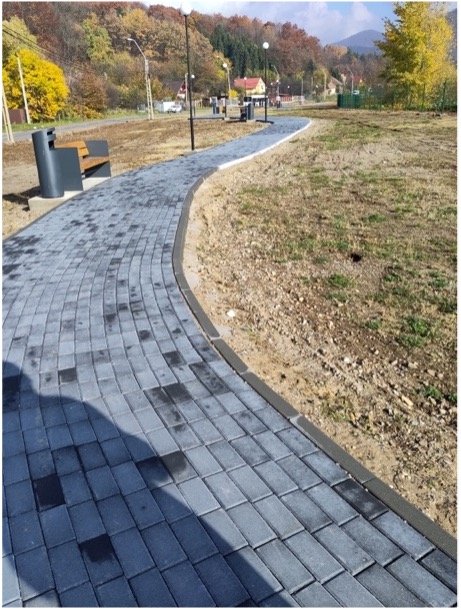
Figure 14: Colonia Topitorilor intervention. Source: Baia Mare municipality.
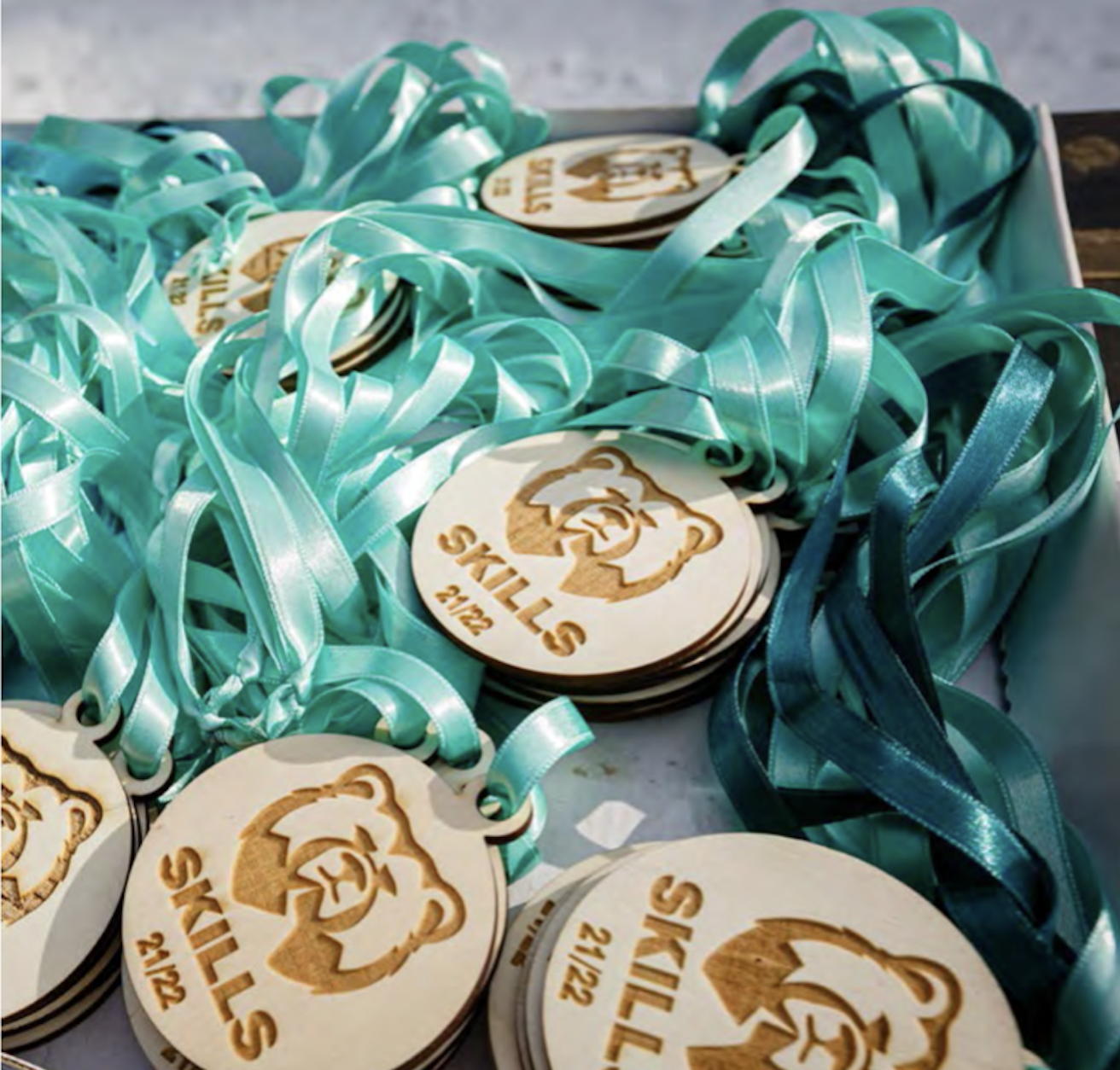 Figure 15: Makerspace products. Source: SPIRE project.
Figure 15: Makerspace products. Source: SPIRE project.
The SPIRE Local Action Network, the SPIRE Hub and maker space, the initial iLEU platform, and the iGIS system have already been implemented.
The SPIRE social lens works from a stakeholder network thanks to several effective actions:
- Citizen awareness and engagement.
- Active participation of the local community in re-naturalizing the pilot sites through Plantathlons activities.
- Co-creation processes.
- Business developers and entrepreneurs’ participation in bio-based business programmes.
- The use of the innovative iLEU digital reward system.
(1) Regarding citizen awareness and engagement, the SPIRE Local Action Network could have been consulted regularly to maintain momentum.
- From November 2022 on, a new survey process about health and environmental issues with citizens living close to the pilot sites will be performed so as to get more information from their side, and to keep raising awareness on these crucial topics for the city.
(2) Regarding the Plantathlons activities, the project suffered some delays due to the need for the species evolution analysis until determining the suitable energetic willow species to use.
- From November 2022 on, new Plantathlons have been performed with the final goal of obtaining some harvesting materials during 2023 / 2024.
(3) Regarding co-creation processes, we are now in the final stages of urban physical interventions that follow participative solutions.
- Final technical designs of the pilot sites, including urban furniture have already been implemented.
(4) Regarding the active participation of business developers and entrepreneurs, the Start-ups Mentoring Programme was developed in 2022 and focused on new bio-based materials and bio-based business models.
- In the following stages, personalized SPIRE STARTUPS mentoring sessions will be provided, with particular attention to all the necessary resources and activities to support the prototype development for new biomaterials. Despite the need for more financial support for prototyping (a valuable lesson learned from this experience), the accelerator Mentoring 2nd Stage will provide know-how on internationalization, IP certification, marketing, and other management-related content.
(5) The iLEU digital reward system to sponsor environmentally friendly actions and initiatives has been initiated, though it faces some constraints related to the number of users.
- New strategies have been developed to promote the use of the iLEU token.
The setup of effective coordination mechanisms is in place in the SPIRE project. The project’s design included an intranet platform and a risk management analysis shared with the various project partners involved.
The ongoing communication between the different members of the Consortium is not as agile and fluid as it should be. During this challenging implementation period, the consortium partners have maintained their roles, but the team needs more cohesion.
- Even if a Quality and Risk Management Plan is in place, the Consortium should revise the contingencies and procedures to mitigate different situations. Part of the rationale is being periodically redefined under the direct supervision of Baia Mare municipality.
Due to the project's complexity and different angles, a unitary evaluation framework has been developed, allowing the project to measure its results against an appropriate baseline. This baseline is valid for the local scale and usable at the European Level.
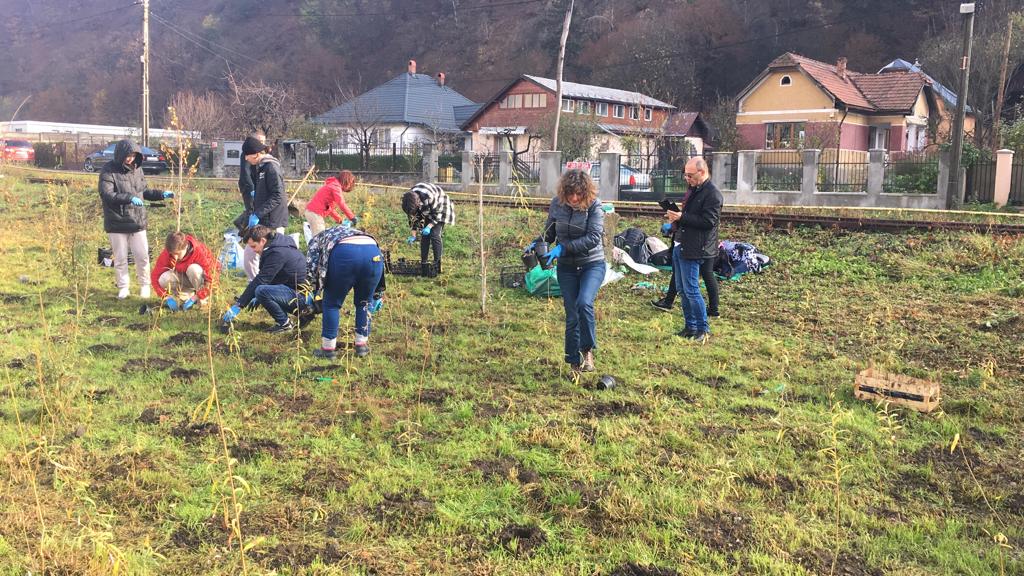 Figure 16: Plantathlon activities November 2022. Source: SPIRE project.
Figure 16: Plantathlon activities November 2022. Source: SPIRE project.
The SPIRE Standards, Key Performance Indicators (KPI), and auxiliary tools - the GIS Dynamic Atlas platform, the Conceptual Adaptive Site Management Application (CASMA), and the remediation TOOLKIT - were comprehensively developed during the first implementation year of the project.
The SPIRE project has implemented an iGIS smart mapping and monitoring system for the five pilot sites that will provide healed land for the future of Baia Mare. The iGIS system includes on-site ground measurements of pollutants and satellite imagery, as well as predictive algorithms for site improvements due to phytoremediation activities.
- Information regarding plantathlons and landscaping is being added continuously to the platform to provide a comprehensive image of the SPIRE efforts and benefits to the community.
The Activation of Local Stakeholders has been vital to this project since community awareness, engagement, and participation are crucial to ensure the project's consistency and future positive cascade effects.
Efforts in multi-channel communication need to be improved at various levels:
(1) Traditional media (newspapers, radio, even TV if possible), to get the needed contact with citizens and local stakeholders – necessary mainly for the iLEU usage -;
(2) Academic and entrepreneur networks to get the needed contact for new ideas and business development.
(3) Social media (project website and Facebook, Linkedin, and Twitter channels) to gain visibility and provoke dialogue outside the Romanian borders.

Figure 17: Bio-based materials presentation at Association of Maramures Entrepreneurs. Source: SPIRE project.
Part of the project's potential and the needed shift related to health and environmental awareness and behaviour will only be possible if citizens and young people act as climate, health, and environmental champions. Some communication actions and activities are needed in this respect.
- SPIRE's visual communication materials and key messages need to be intensively disseminated. For SPIRE finally to become a reference regarding cost-effective phytoremediation strategies for heavy metal polluted sites, more intense global communication and dissemination activities work should be designed and developed by the SPIRE consortium.
The project has already considered the metropolitan scaling-up possibilities and strategies regarding the Integrated Metropolitan bio-based strategy and Masterplan 2050.
SPIRE has entered different national events: (1) event @Today's Future: Green and Digital, with UIA Cluj Future of Work project, (2) 2022 Sustainable Development Gala Award for 2021, about Education and the SDGs, (3) GOTech event in Bucharest - Towards a climate RESILIENT-SMART WORLD, and (4) Bio-materials presentation at The Technical University of Cluj- Napoca - North University Centre of Baia Mare-Faculty of Science and at the Association of Maramures Entrepreneurs
Also, in international platforms to gain visibility: (1) AIR-BREAK - SPIRE Joint Workshop, boosting the linkages with other UIA projects, (2) Night of European Researchers - SCIENCE4FUTURE-II, (3) Smart City Expo World Congress 2022, (4) New York Architecture Biennale 2022 (5) URBiNAT International Conference 2022 (6) UrbanByNature programme and CitiesWithNature Action Platform, and (7) IA-EUI Transfer Options Focus Group.
As for web and dissemination articles, eight of them have been published on the UIA website. Four have also been published in UN-Habitat central platform, UrbanResilienceHub website, and UrbanNext digital magazine.
- Such a holistic and complex project will reach innovative achievements despite the multi-faceted barriers and constraints it has encountered.
- The lessons learnt that such a project could offer to other European partners trying to implement phytoremediation technics in heavy-metal polluted soils are of extreme value.
- A closer relationship between the Local Government and other municipalities suffering similar problems of brownfield remediation and circular biomass solutions in the global arena is recommended.
3. Lessons learnt and next steps
SPIRE has focused this year on ensuring the implementation of activities such as the plantathlons; the urban interventions derived from the co-creation dynamics and activities, including the technical design of the pilot sites; the launch of the iGIS smart system and the iLEU platform; and the final steps of the Startup Programme, now complemented with new activities led by local stakeholders. During the third year of the SPIRE project, critical lessons learned have arisen:
- After careful analysis of the energetic willows and other vegetal species growing evolution in sites, the SPIRE team now knows the optimum species seeds, where to get them, when to plan them, and how to do it properly to get the maximum impact soil decontamination are.
- Urban solutions (already co-designed and co-produced with citizens) in pilot sites are interventions that underpin the local social campaigns to raise awareness and get commitment from Baia Mare citizens. New surveys and participatory activities will be performed in 2023 to advocate for urban green infrastructure and well-being as two interconnected dimensions
- Pollution is one of the most significant environmental challenges worldwide, and the phytoremediation techniques tested in Baia Mare and the lessons learnt have great potential for scalability and marketability. The lack of short-term results prevents some cities from investing in these proposed measures. However, with the SPIRE project as a global reference, the real impact and long-term positive consequences will become evident over time.
- iLEU reward system and platform, supported by the iGIS smart system already in place, hold more possibilities to overcome the constraints already explained through all the SPIRE process (timebank, potential migrant target, and local entrepreneur's networks linkages). It highlights, again, the need for culture-shifting towards RESILIENCE, not only in citizens' environmental behaviour but also in legal frameworks and procedures. These groundbreaking initiatives will only occur by allowing ourselves and our procedures to be adaptable, reflexive, and transformative.
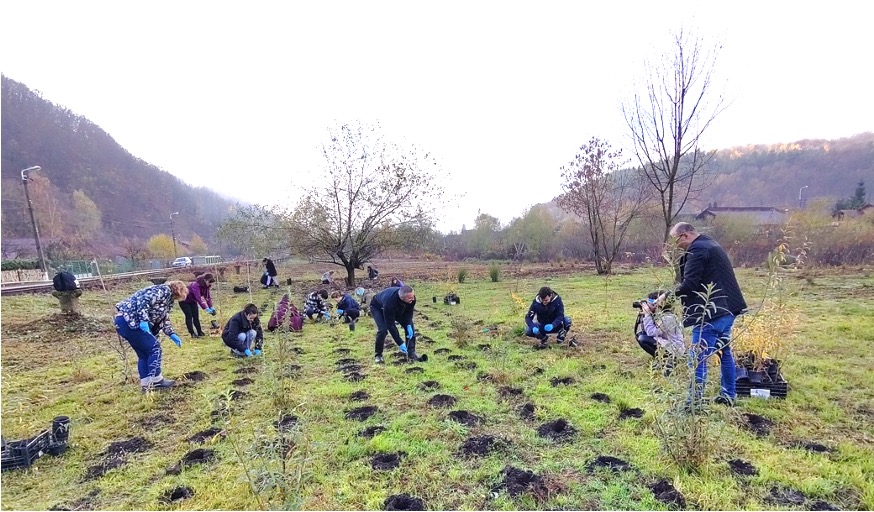 Figure 18: Plantathlons (November 2022) . Source: Baia Mare municipality.
Figure 18: Plantathlons (November 2022) . Source: Baia Mare municipality.
4. Acknowledgements
This third journal has been written based on the inputs provided by email exchanges, online conferences with the SPIRE team partners, and a field visit to the city in October 2022.
- Celaya Alvarez A. (2022). Transforming Geospatial Information (GIS) into urban knowledge in Baia Mare. Available at: https://uia-initiative.eu/en/news/transforming geospatial-information-gis-urban-knowledge-baia-mare
- Celaya Alvarez A. (2022). SPIRE Start-Ups Mentoring Programme: building a culture of innovation. Available at: https://uia-initiative.eu/en/news/spire-startups-mentoring-programme-building-culture-innovation
- Celaya Alvarez A. (2021). What do E-WALLETS have to do with environmental protection? Available at: https://uia-initiative.eu/en/news/what-do-ewallets-have-do-environmental-protection
- Celaya Alvarez A. (2021). Baia Mare community in action. Available at: https://uia-initiative.eu/en/news/baia-mare-community-action
- Celaya Alvarez A. (2021). Re-naturing cities through phytoremediation: How Nature Based Solutions can make a difference. Available at: https://uia-initiative.eu/en/news/renaturing-cities-through-phytoremediation-how-nature-based-solutions-can-make-difference
- Celaya Alvarez A. (2021). Resilient cities after COVID-19: the need for green infrastructure. Available at: https://uia-initiative.eu/en/news/resilient-cities-after-covid19-need-green-infrastructure
- Celaya Alvarez A. (2020) Urban soil decontamination for citizens’ health. Available at: https://uia-initiative.eu/en/news/urban-soil-decontamination-citizens-health
- Celaya Alvarez A. (2020) Creating new social and economic value: Restoring the urban ecosystem. Available at: https://uia-initiative.eu/en/news/creating-newsocial-and-economic-value-restoring-urban-ecosystem
- Celaya Alvarez A. (2020) SPIRE Zoom In: Plantathlon and Phytoremediation in BaiaMare. Available at: https://www.uia-initiative.eu/en/news/spire-zoom-plantathlon-and-phytoremediation-baia-mare
- Celaya Alvarez A (2015). Scope and limitations of indicators related to disaster risk reduction in urban settings: towards an urban resilience model [Master’s thesis]. Bilbao and Brussels: Network on Humanitarian Action Master, Deusto University and NOHA Network.
- Coman et al., (2010). Heavy Metal Soil Pollution - Specific issues for Baia Mare area, Available at: http://journals.usamvcluj.ro/index.php/promediu/article/view/4833
- Coman M. (2016). Depresiunea Baia Mare: protecţia mediului din perspectiva dezvoltării durabile. protecția mediului din perspectiva dezvoltării durabile. Available at: http://ebibliophil.ro/carte/depresiunea-baia-mare-protectia-mediului-din-perspectiva-dezvoltarii-durabile
- EC (2022) Copernicus. Available at: https://www.copernicus.eu/es/sobre-copernicus
- EC (2017). Nature based solutions. Available at: https://ec.europa.eu/info/research-and-innovation/research-area/environment/nature-based-solutions_en
- EC Environment (2019). Ecosystem services and Green Infrastructure. Available at: https://ec.europa.eu/environment/nature/ecosystems/index_en.htm
- Leopa, S. (2020). Standards and Key Performance Indicators for Smart Post-Industrial Regenerative Ecosystems. SPIRE - Smart Post-Industrial Regenerative Ecosystem, Technical Report D4.3.2, DOI: 10.13140/RG.2.2.33583.56481(D.4.3.2, Standards and Key Performance Indicators for Smart Post-Industrial Regenerative Ecosystems)
- Mihaiescu, T., Vidican, R., Miclaus, D., Plesa, A., Crisan, I. (2021). Perspectives on phytoremediation landscaping principles for post-industrial cities. Academia Letters, Article 309. https://doi.org/10.20935/AL309.
- Papina, Codruț (2021). D6.1.2 Report on co-design workshops with the SPIRE Local Action Network
- Papina, Codruț (2021). D6.1.3 Final technical designs for pilot sites
- Pop Sorin (2020) GIS platform (D 5.1.1. GIS platform)
- Sorin POP, Carmen GHIȘE, Ciprian Ghișe, Ana Maria POP, Sorana ROTTA, Alexandru Roja, Sabina LEOPA, Dorin Miclaus, Pietro ELISEI, (2020). D.5.2.1. White paper ILEU.
- SPIRE (2020). 4.1.1.1 Consolidated SPIRE Local Action Network.
- SPIRE (2020). D.4.1.2 Awareness and Openness Report. Available at: http://spire.city
- SPIRE project (2020). Available at: http://spire.city
- Verga P. L. (ed.), Onesciuc N., Mihaiescu T., Plesa A., Vajda B., Sebestyen T., Pop S., Ghise C. R., Ghise C. I., Pop A. M., (2020). State of the Art / Innovation Landscape Report. Bioflux Publishing House, Cluj-Napoca. Online edition, ISBN 978-606-8887-73-9. (D.4.3.1, State of the Art Innovation Landscape Report). Available at: http://spire.city
- Verga P. L., Onesciuc N., Mihaiescu T., Plesa A. (2020). State of play in Baia Mare. Desk analysis, Research repository & Awareness appraisal. Bioflux Publishing House, Cluj-Napoca. Online edition, ISBN 978-606-8887-75-3. (D.4.3.3., State of play in Baia Mare - Desk analysis, Research repository & Awareness appraisal). Available at: http://spire.city
- Vidican Roxana, Mihăiescu Tania, Crișan Ioana, Sebestyen Tihamer, Vajda Lajos, Pleșa Anca (2021). D.6.2.11-Safety and health plan for the sustainable community use of the SPIRE productive landscapes
About this resource
The Urban Innovative Actions (UIA) is a European Union initiative that provided funding to urban areas across Europe to test new and unproven solutions to urban challenges. The initiative had a total ERDF budget of €372 million for 2014-2020.
Similar content




